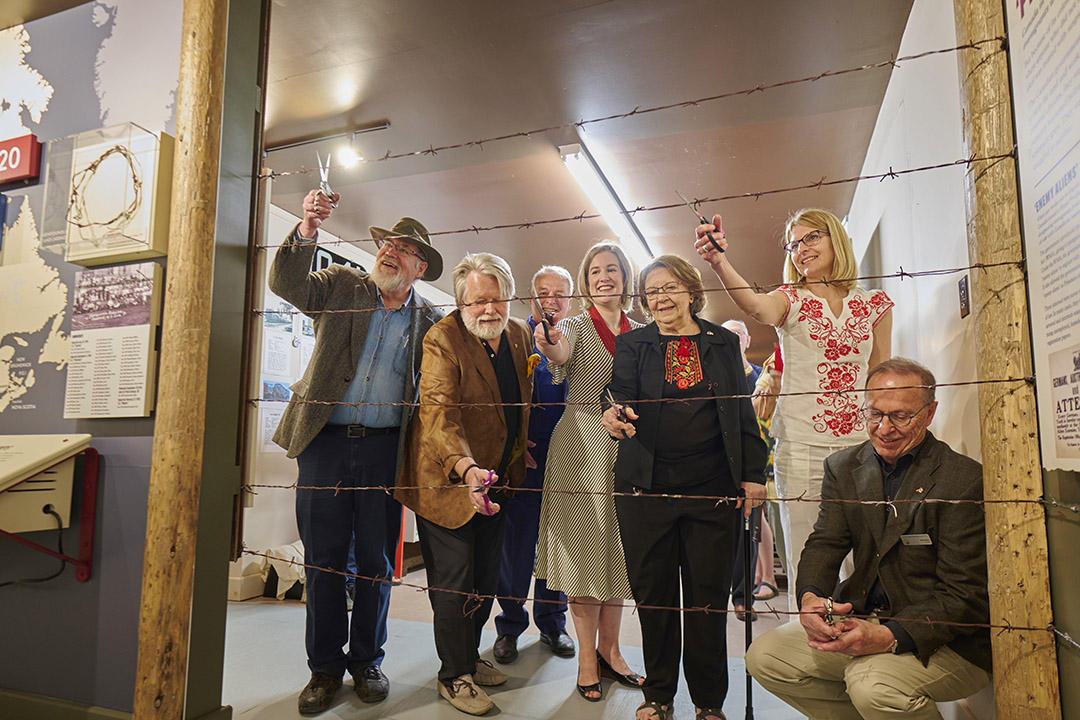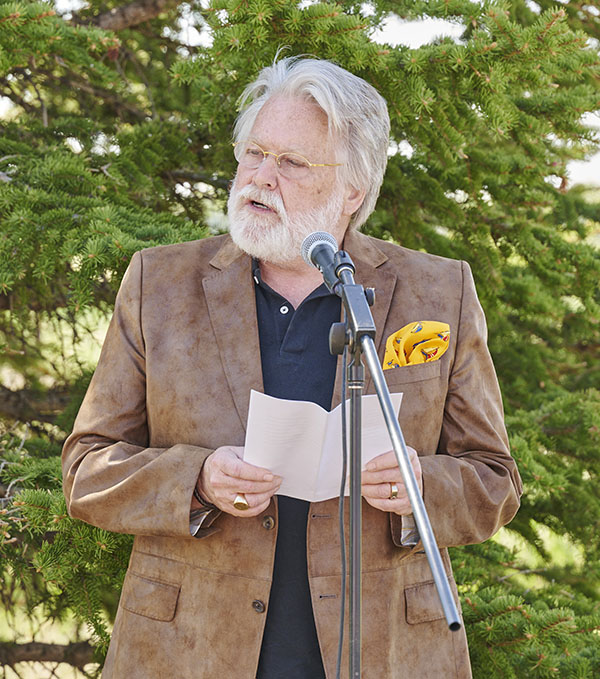
USask professor emeritus helps preserve the history of local internment camp
Dr. Bohdan Kordan (PhD) has become one of the most steadfast guardians of a very painful memory in Canada’s history. He calls it his duty to remember.
By Paul SinkewiczThe retired professor of political studies at the University of Saskatchewan (USask) and the founding director of the Prairie Centre for the Study of Ukrainian Heritage (PCUH) at St. Thomas More College (STM) has been researching and writing about Canada’s ‘enemy aliens’ for more than 30 years. His academic work has contributed to healing a wound in the Ukrainian-Canadian community by shining a light on past injustices, and by bringing a new museum exhibit to life that will continue that work into the future. The Eaton Internment Camp Permanent Exhibit was officially opened on June 4 at the Saskatchewan Railway Museum.

Kordan said its lessons will teach generations to come about the dangers of fear borne of conflict and mixed with racial or ethnic animus.
For more than 8,500 men, women and children during the First World War, Canada was a land of broken promises. They had emigrated from Europe in the hopes of building a life of prosperity in the burgeoning democracy but would find themselves helpless pawns in the politics of the time.
After the outbreak of hostilities, the Canadian government passed the War Measures Act, giving itself sweeping powers to arrest and detain Canadian immigrants from Germany or Austria-Hungary. Most of the detainees were of German or Ukrainian heritage, and had committed no crimes, but did have the misfortune of being unemployed or homeless. They were swept up by authorities and became prisoners of the state, housed in internment camps across the country. Most were single men, but some had families that voluntarily joined them behind barbed wire.
Another 80,000-plus were forced to register as ‘enemy aliens’ with the government and produce documentation when it was demanded as part of a surveillance system.
“My interest in the issue stems from two basic questions: how did this happen and why has it disappeared from public memory?” said Kordan. “In attempting to address these questions, I embarked on a long journey of discovery, coming to know Canada in unexpected ways. It was a Canada that I neither knew nor recognized. It underscored for me the importance of making the experience more well-known—to use my skills to integrate the story into the discourse about the nature of Canada, its promise but also pitfalls. The permanent display at the Saskatchewan Railway Museum, which I was privileged to be involved with, helps make this possible. My hope is that the exhibit will become part of the local but also larger conversation about rights and human dignity.”
In June 2022, a grand opening ceremony took place just outside Saskatoon ensuring the memory of that period of fear and discrimination in Canada’s history would not be forgotten by future generations.
The Eaton Internment Camp only played a brief role in the story of Canada’s internment operations. On Feb. 25, 1919, 65 prisoners were relocated from the Munson Internment Camp in Alberta to the railway siding at Eaton. But a lack of confidence in the military guard prompted authorities to abandon the location for more secure facilities, and just 24 days after it was initially established, the internees were transported to a military installation in Nova Scotia, where they would await their eventual deportation. The Eaton camp was dismantled shortly after their removal.

Cal Sexsmith, president of the Saskatchewan Railway Museum, said the project was nearly 20 years in the making. It started with Kordan visiting the site to confirm it as the location of the Eaton camp. What resulted from that visit was a monument erected in 2004 and the start of discussion about a permanent interpretive exhibit. In 2022, all the work came to fruition thanks to volunteers from the Saskatchewan Railroad Historical Association, who constructed the exhibit with the help of a grant from the Endowment Council of the Canadian First World War Internment Recognition Fund.
Kordan said the question of whether Canada is at risk of ever making such a mistake again is dependent upon honouring history and teaching following generations about the past—the very purpose of the new exhibit. He said those who made political decisions around internment at the time understood the moral choice they were confronted with and chose to ignore it.
“Fundamentally, politics is about moral choices,” said Kordan, who retired from USask in 2021. “Can this happen again? Confronted by political challenges, bad decisions can occur, and the wrong moral choices can be made. So, yes, from this perspective, such tragedies can happen again. However, it is less likely to occur if we are taught and learn about the past. It starts with the children, sensitizing them to the issue of rights, making them aware of the importance of protecting the vulnerable and less fortunate. As a teaching tool, where young people will visit and learn about what happened on this site, the permanent display will look to make this possible.”
Providing awareness and standing up against injustices for the peoples of Ukraine is nothing new for Kordan. As former head of STM’s Department of Political Studies, Kordan specialized in nationalism, ethnic conflict and state minority relations; Canadian foreign policy; and contemporary Ukraine. His passion in this area led to his role in founding the PCUH at STM in 1995. Kordan remains invested in the promotion and support of PCUH’s mission to advance study of various aspects of Ukrainian heritage, culture, and life, while supporting the long and pioneering tradition of Ukrainian Studies at USask—home province for a large Ukrainian population—by providing context for the university’s Ukrainian Studies Certificate program, while also guiding the work of graduate students with an interest in Ukrainian studies.
The Eaton Internment Camp Permanent Exhibit was created through a partnership involving the PCUH, the Ukrainian Canadian Congress–Saskatchewan Provincial Council, the Saskatchewan German Council, and the Saskatchewan Railway Museum. The museum is located southwest of Saskatoon, at the junction of Highway 60 and the Canadian National Railway line.
A recording of the June 4, 2022 ceremony is available here.

